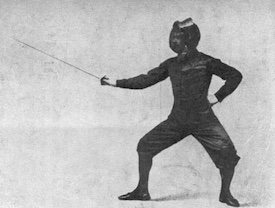That's what I would expect based on their description.
According to what they say, their process burns the same data onto the disc, but does so using a slightly more "conservative" physical format.
As with most specs, the Red Book CD standard sets a minimum and maxiumum range for pit and gap length.
(I'm not quite clear if Yamaha is actually going outside the spec - or simply locking the drive down so it always chooses the absolute most conservative setting within the spec.)
Either way, their claim seems to be that their process will make it easier for the drive to read the disc properly and without errors.
However,
ASSUMING THAT THERE ARE NO UNCORRECTABLE ERRORS, then it should result in exactly the same data being written and read.
(The benefit would be that it would write discs that could be reliably read by a wider variety of players without errors.)
Note:
CD-Rs are actually recorded using a very different process than pressed discs.
On pressed discs, actual pits are pressed into the surface, and then the surface is plated with aluminum or gold.
CD-R discs store data on a layer of dye, which sits above a flat mirrored layer, and which is blistered or otherwise altered by the write LASER.
Because of the different process involved, the contrast in reflectivity of the data pattern written onto CD-R discs is much lower than on pressed discs.
Because of this they actually require somewhat different settings on the LASER mechanism in the drive you use to read them.
To make life even more interesting, there are several different types of dyes, and each is different (although they're supposed to be interchangeable).
The original dye used on low-speed discs was green; Verbatim had their own exclusive dye which was deep blue; and modern high speed discs are usually silver or slightly golden.
Modern drives are designed to easily cover this entire range - but early ones were not (especially those sold before CD-Rs even existed.)
Many early CD players were designed for pressed discs and wouldn't play CD-R discs at all.
Many early CD-R writers would only accept CD-Rs that used the original green dye, and many early players would only play
that type.
Many early players would also only work, or would work better, with discs written at certain speeds (and many writers had stated "preferred" write speeds).
That's one reason why most CD writing software still offers the option of choosing a write speed rather than always using the fastest speed available.
(Presumably, some early drives wrote significantly off-spec pits at certain speeds, and certain players were more tolerant of off-spec pits than other.)
Yamaha also claims that their AMQR process results in less jitter on the recovered data.
Since the data is re-clocked by the player, this should have no effect on the jitter present on the output digital audio signal.
However, because jitter is one cause of data errors, reducing the jitter at the read interface could actually reduce the overall number of various types of read errors.
My point here is that, in the early days of CD-R recording, there were serious compatibility issues, and not all CD-R discs would read reliably on all players, or even close.
This was a legitimate and serious issue in the early days of audio CD-Rs.
For example, in those days, it was quite common to see lists of which specific brands of CD-R blanks would work best with specific writers or players.
Therefore, it's not unreasonable that Yamaha, and some other manufacturers, looked for ways to tweak the standard to produce more reliably readable discs....
And that they would be bragging about various attempts at solving the problem....
(And so we shouldn't rule out the possibility that their special discs might actually read more reliably in drives that are borderline or have substandard error correction.)
However, again, assuming a perfect read, with no uncorrectable errors, on one of their discs, and on a "normal" disc, the data delivered should be exactly the same.
Off the bat I must say I have quite a bit of respect for all studio recording engineers - in any field people at the coal face seem to learn a lot, and they seem to have to learn it quickly.

If the above image summarizes the AMQR process, it would suggest that it makes it easier for an optical drive to read the bits (or the "pits", as it were).
But, a non-AMQR CD should sound the same as an AMQR CD as long as the optical drive can read both discs without uncorrectable errors. Is that a fair statement Analog ?
Off the bat I must say I have quite a bit of respect for all studio recording engineers - in any field people at the coal face seem to learn a lot, and they seem to have to learn it quickly.

If the above image summarizes the AMQR process, it would suggest that it makes it easier for an optical drive to read the bits (or the "pits", as it were).
But, a non-AMQR CD should sound the same as an AMQR CD as long as the optical drive can read both discs without uncorrectable errors. Is that a fair statement Analog ?
























